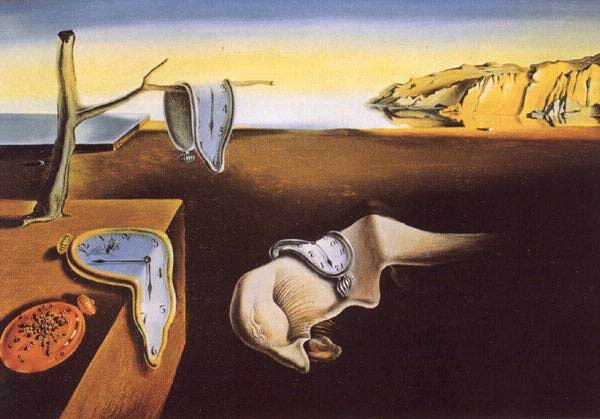Surrealism: Difference between revisions
No edit summary |
(No difference)
|
Revision as of 17:09, 13 February 2006
a movement in literature and visual art that started in France in the second decade of the twentieth century and thrived in the inter-war period. It originated from Dadaism, a movement created during the First World War that created anti-art and negated reasoning, but took a different path from its precursor because surrealism created new, positive form of art.
The term ‘super-realism’ was first used by Guillaume Apollinaire in 1918, but ‘surrealism’ has been introduced by André Breton, a former Dadaist, in his first manifesto of surrealism Manifeste du surréalisme in 1924. He defined this new movement as: “Pure psychic automatism, by which it is intended to express whether verbally or in writing, or in any other way, the real process of thought. It is the dictation of thought, free from any control by the reason and any aesthetic or moral preoccupation.” (Breton).
Surrealism was based on a belief that the world of the unconscious mind, where dreams and fantasies resided, is much better than the world of the conscious mind dictated by logic and reason.
In literature, the leading character was André Breton, who defined surrealism not as a ‘poetic form’, but a ‘machine’ that recorded thoughts. There were no aesthetic or moral boundaries that limited writers because it was spontaneity that was important. Therefore in pursue of that, many writers often applied the theories of Sigmund Freud and wrote in hypnoses. Other writers representing surrealism were Paul Éluard, Jean Cocteau, Guillaume Apollinaire and Louis Aragon.
In paintings, surrealists tried to capture the dreams and fantasies and then reproduce them in forms available to the conscious mind. Thus in paintings strange objects with abnormal shapes, colors, and proportions were very common. By that they combined two realities together and made a ‘super-reality’ or surrealism. Among painters of surrealism there were Joan Miró, Max Ernst and famous Pablo Picasso, and Salvador Dali.
"Persistence of Memory," oil on canvas by Salvador Dali, 1931; in the Museum of Modern Art, New York (9.5 x 13 in.). The most famous painting of the most famous surrealist.
Works Cited
- Wentworth-Sheilds, Francis William. "Surrealism." Encyclopaedia Britannica. Volume 21. 1966
- "Surrealism." The New Encyclopaedia Britannica. Fifteenth Edition. Volume 11. 1998
- Samuel, R.H. "Surrealism." Cassell's Encyclopaedia of World Literature. Volume 1. 1973

